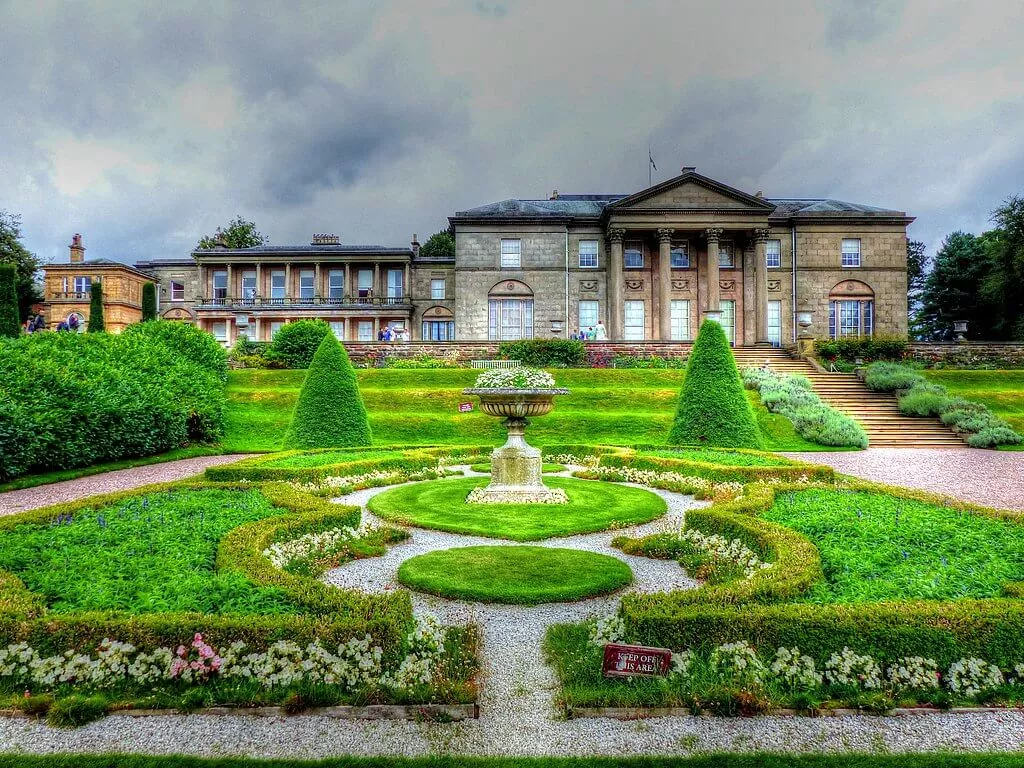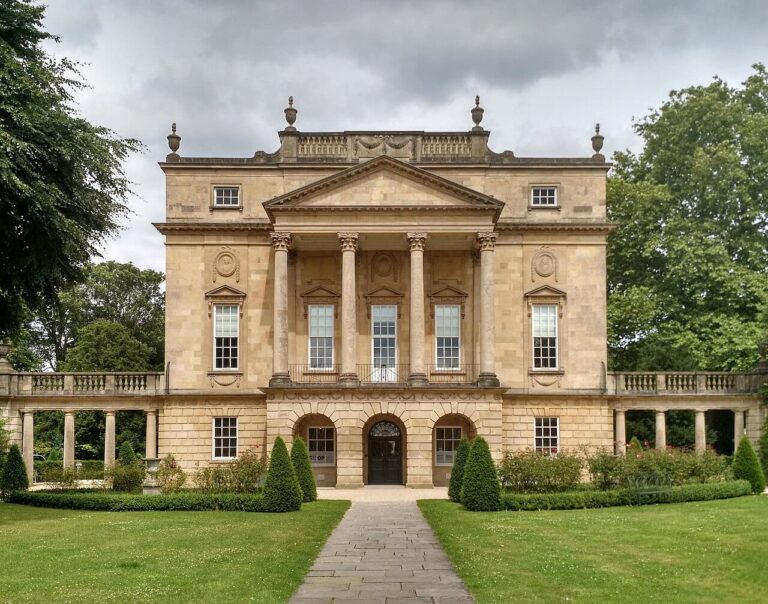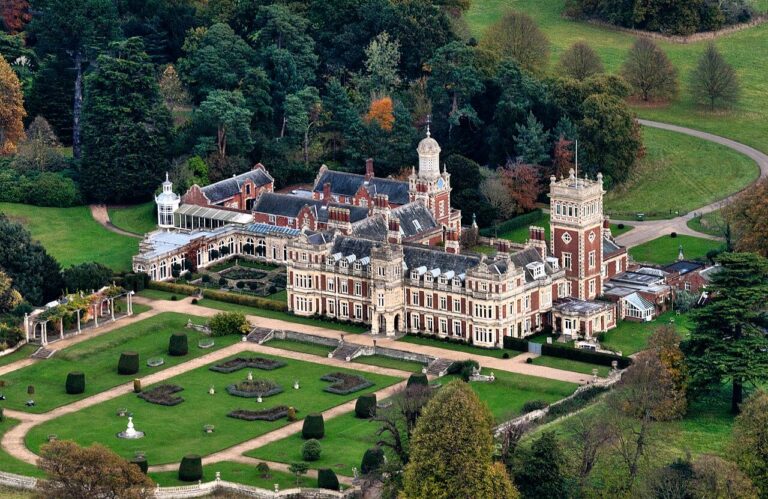The Best Historic Castles in the Peak District
The Peak District National Park is a large nature area in central and northern England. The large national park covers parts of the counties Derbyshire, Cheshire, Greater Manchester, Staffordshire, and South Yorkshire.
The Peak District is the first national park in the United Kingdom and it is known for its stunning landscapes, rolling hills, rugged moorland, limestone cliffs, sparkling rivers, and picturesque valleys. This grand nature, together with the charming villages, historic towns, castles, and stately homes make the Peak District a much-loved destination for nature and culture lovers alike.
The Peak District castles and stately homes are among the finest in the country. From a Norman fortress to the estate of the famous Bess of Hardwick. If you love history, architecture, and beautiful gardens you should visit these castles and stately homes in the Peak District.
Castles in the Peak District
The Peak District is home to a number of castles and historical sites that each have their own rich history. Built as early as the Norman period, these castles were owned by the grandest families in England.

Elvaston Castle
Elvaston Castle, located in Derbyshire, is a stunning stately home and Gothic Revival castle. The original Elizabethan-style house was constructed in 1633 for Sir John Stanhope. In the early 19th century, the manor underwent a transformation into a Gothic Revival mansion by James Wyatt. Wyatt designed a new wing, the Great Hall, and most of the interiors. However, since the Second World War, the manor house has fallen into disrepair.
To create a private and secluded oasis of great beauty, the Fourth Earl of Harrington commissioned landscape gardener William Barron. Over the course of two decades, Barron meticulously designed and cultivated these magnificent gardens.
Visitor information: the castle is not open to the public. The Elvaston Castle Country Park with 321 acres of open parkland, woodland, and formal historical gardens is open to visitors. Visit the website for more information.

Bolsover Castle
Sir Charles Cavendish constructed Bolsover Castle in the early 17th century, using the ruins of a 12th-century castle as a foundation. The original castle belonged to the Peverel family until it was purchased by Cavendish in 1590.
The new castle, unlike its predecessor, was not designed as a fortification, but rather as a luxurious hilltop retreat for the Cavendish family’s pleasure. Over time, the castle underwent several expansions and eventually became the residence of the Earls and Dukes of Portland.
A tour of the castle allows you to step back in time and experience the extravagance of the aristocracy through lavishly decorated rooms, a riding school, and recreated gardens. Additionally, the castle offers stunning views of the Derbyshire Countryside, making it an excellent destination for a family day out.
Visitor information: the castle is open to visitors. Visit the website for more information.

Peveril Castle
The imposing ruins of Peveril Castle overlooks the pretty village of Castleton in the heart of the Peak District in Derbyshire. The 11th century castle was the main seat of the feudal barony of William Peverel or William Peveril (also known as the Honour of Peveril) and was built shortly after the Norman Conquest of England and is considered one of England’s earliest Norman fortresses.
In 1155, the castle was taken by King Henry II who also visited the castle on multiple occasions.
From the castle, you have breathtaking views of Hope Valley. You can also learn more about the story of Peveril and the remains of the keep including a medieval lavatory. Plus make sure to tour the picturesque village of Castleton.

Riber Castle
Riber Castle is a famous castle folly in the county of Derbyshire. The Gothic castle-like building was built in 1862 by industrialist John Smedley. The castle is located on the top of the hill overlooking the town of Matlock. Though the folly castle was built as a private home it didn’t stay one for long. After the death of John Smedley’s wife in 1892 it became of prep school and later a wildlife park. The Gothic castle now stands empty and can not be visited.
Stately Homes in the Peak District
The Peak District is home to some of the finest stately homes and historic houses in England. From grand homes that were built by the noble Cavendish family to the grand estate of one of the richest women in Elizabethan England. If you love architecture, historic interiors, and beautiful gardens then you should visit these stately homes in the Peak District.

Chatsworth House
Chatsworth House, the ancestral home of the Dukes of Devonshire, is the first Baroque-style residence to be built in England. The family has owned the property for nearly 500 years.
William Talman designed the South and East fronts of the house in the English Baroque style. The Baroque State Apartments, created by the first Duke of Devonshire, were intended for a visit from King William III and Queen Mary II, but the royal couple never came. The state rooms have since been preserved.
Chatsworth House boasts an impressive collection of furniture, neoclassical sculptures, and books. The art collection is particularly noteworthy, spanning 4,000 years and featuring items from ancient Rome and Egypt, as well as works by Old Masters such as Rembrandt and modern artists like Lucian Freud.
The house has also appeared in various films and television series, including Pride and Prejudice, Peaky Blinders, and The Duchess, which portrays the life of Georgiana, Duchess of Devonshire, who once lived at Chatsworth.
Visitor information: the house and gardens are open to visitors. Visit the website for more information.

Calke Abbey
Calke Abbey, located in Derbyshire, is a stunning Baroque country house that has never been an abbey. The site on which the house stands, however, used to be the location of an Augustinian priory from the 12th century until it was dissolved by King Henry VIII.
In 1622, the Harpur family purchased the estate, and Sir John Harpur constructed the new house between 1701 and 1704. In 1981, due to escalating death duties, the family sold the estate to the National Trust. The house is intentionally preserved as a grand country house in decline, giving visitors a glimpse into the past.
The house is surrounded by a beautiful landscape park that includes a walled garden, a flower garden, and a kitchen garden. The estate also features an ancient deer park that is a Site of Special Scientific Interest and a national nature reserve.
Visitor information: the house and gardens are open to visitors. Visit the website for more information.

Tatton Hall
Tatton Hall, located in Tatton Park near Knutsford, is an 18th century Neoclassical country estate that has been home to the Egerton family for many centuries. The house boasts an important collection of paintings and books, and visitors can admire a rare Salviati portrait on display. Experts from BBC’s “Britain’s Lost Masterpiece” have identified one of Tatton Park’s paintings as a unique work by renaissance artist Francesco Salviati.
The estate is surrounded by 50 acres of landscaped gardens, which include a Japanese garden, a Walled Kitchen Garden, and Pleasure Grounds.

Haddon Hall
Haddon Hall, located in Derbyshire, is a medieval country house that was once the home of the Dukes of Rutland and is now owned by Lord Edward Manners. The house is considered to be one of the finest examples of medieval manor houses in England and boasts a beautiful collection of tapestries and early English furniture.
Visitors can also enjoy the Elizabethan Walled Gardens, which were recently redesigned by Arne Maynard. Haddon Hall has been the inspiration for many works of literature, art, and has been featured in numerous film and television adaptations for example, it was a film location for Pride and Prejudice.

Hardwick Hall
Hardwick Hall, an Elizabethan prodigy house, is an exemplary architectural feat built in the late 16th century for Bess of Hardwick, who was considered the second wealthiest woman in Great Britain after the Queen. The renowned architect, Robert Smythson, designed the house, which is one of the earliest examples of Renaissance style in England.
Designed to showcase Bess’ wealth, the house is a groundbreaking architectural marvel featuring numerous and expansice windows, a symbol of wealth during that era. The house’s symmetrical design was a new concept for residential buildings, and the Great Hall constructed on an axis running through the center of the home, and the ceiling heights of the floors increase as you ascend.
Hardwick Hall remained in the Devonshire family’s possession for centuries until it was bequeathed to the National Trust in 1959. The house boasts an impressive collection of 16th century textiles, including works by Bess of Hardwick, and a significant assortment of fine tapestries and furniture from the 16th and 17th centuries.
Visitor information: the house is open to the public. Visit the website for more information.
Hardwick Old Hall
Hardwick Old Hall is a ruined Tudor house that was built by of one of the richest women in England: Bess of Hardwick. When her fourth marriage ended, Bess fled to her family estate Hardwick. The medieval manor house that stood on the estate was not deemed good enough for Bess so she built a new house in 1587 using the latest Italian innovations. The two wings had grand state rooms with large windows and Elizabethan plasterwork.
Bess did not spend much time in the house, before the house was even completed she had already started working on the new Hardwick Hall.
Visitor information: the Tudor ruins can be visited where you can still see the Elizabethan plasterwork and enjoy the grand views of the surrounding landscape. Visit the English Heritage website for more information.

Sutton Scarsdale Hall
Sutton Scarsdale Hall, constructed between 1724 and 1729, is a Georgian mansion that has been left to decay for many years. The house was gutted in 1919, and some of its parts were sold to William Randolph Hearst, a newspaper mogul, and taken to the United States. However, remnants of the hall’s plasterwork are still visible, and from the property, visitors can enjoy a stunning view of the surrounding countryside. More details can be found on the English Heritage website.

Renishaw Hall and Gardens
Renishaw Hall, the ancestral home of the Sitwell family for 400 years, is a 17th-century manor house that underwent modifications in later centuries, including a redesign by Sir Edwin Luytens in 1908. The house is surrounded by an exquisite Italianate garden, which was created by Sir George Sitwell and has won many accolades.
Visitor information: the house and garden are open to visitors. Visit the website for more information.

Kedleston Hall
Kedleston Hall, situated in Derbyshire, is an example of an 18th century Neoclassical manor house. Nathaniel Curzon commissioned its construction after Robert Adam’s design. The manor was built on the location of a medieval village that was relocated by Nathaniel Curzon to make way for the new estate.
The house was designed to rival Chatsworth and was inteded as a “temple of the arts”. It was not intended as a family residence but as a grand palace to display paintings, culptures, and furniture. The State Floor features lavish 18th century interiors.

The museum as Kedleston Hall houses a collection of 1,000 items from various regions of Asia that were gathered by George Nathaniel Curzon, 1st Marquess of Kedleston.
Visitor information: the house is open to visitors. Visit the website for more information.

Thornbridge Hall
Thornbridge Hall is a stately home in the Peak District. For six centuries, the country house was the seat of the Longsdon family but in 1790 the house was bought by Andrew Morewood who considerably enlarged the house. In the mid-19th century, Thornbridge Hall was rebuilt by Frederick Craven in Jacobean style. In the Great Hall, a William Morris/Edward Burne-Jones window was installed.
Thirty years later, the house was again extended, this time by George Marples. He also landscaped the park and 12 acres of formal gardens. In the early 20th century the house was decorated with items from other English stately homes like Clumber Park and Derwent Hall.
Visitor information: the house is now a private home but the house and gardens are open to visitors. Visit the website for more information.





